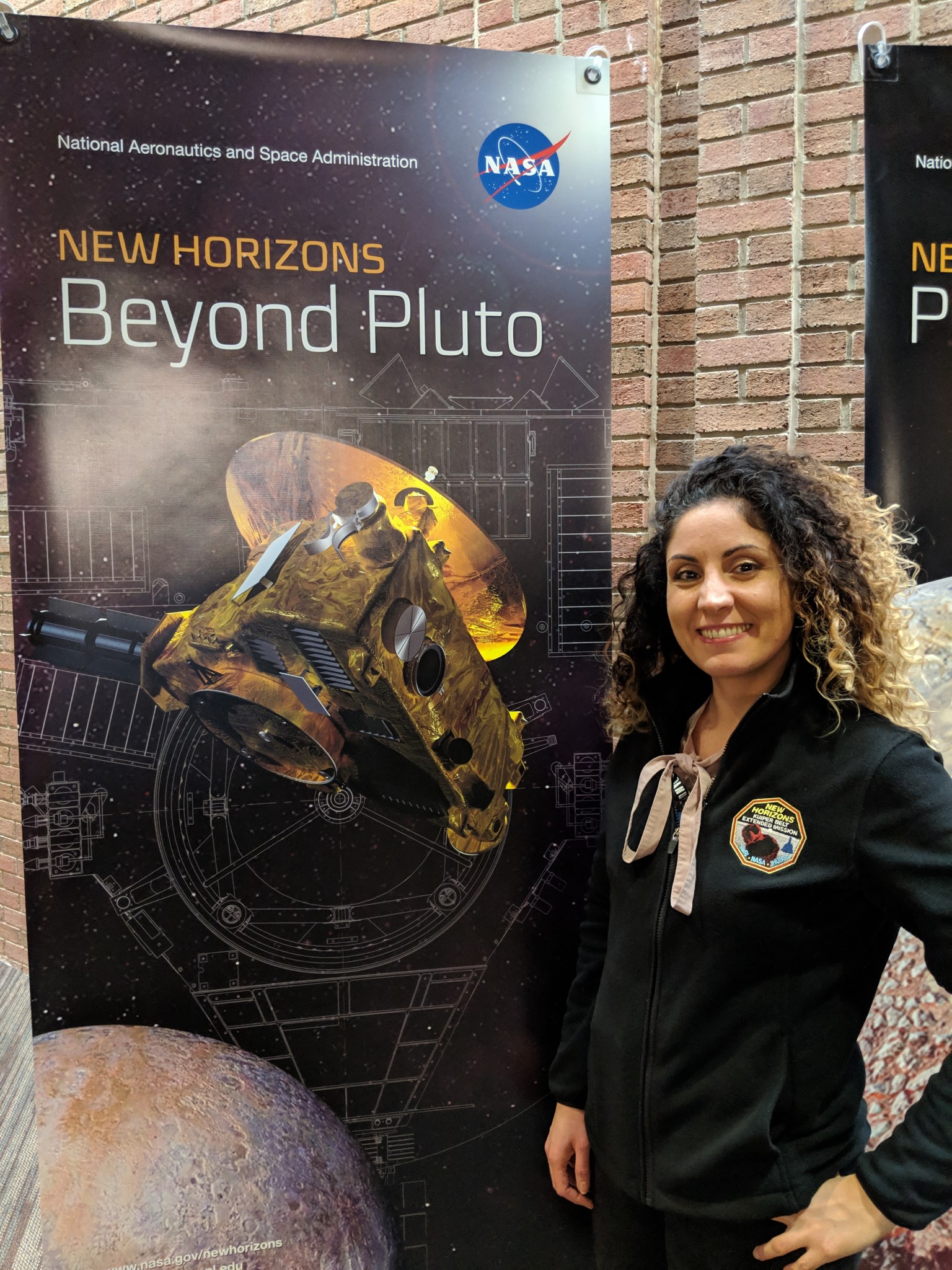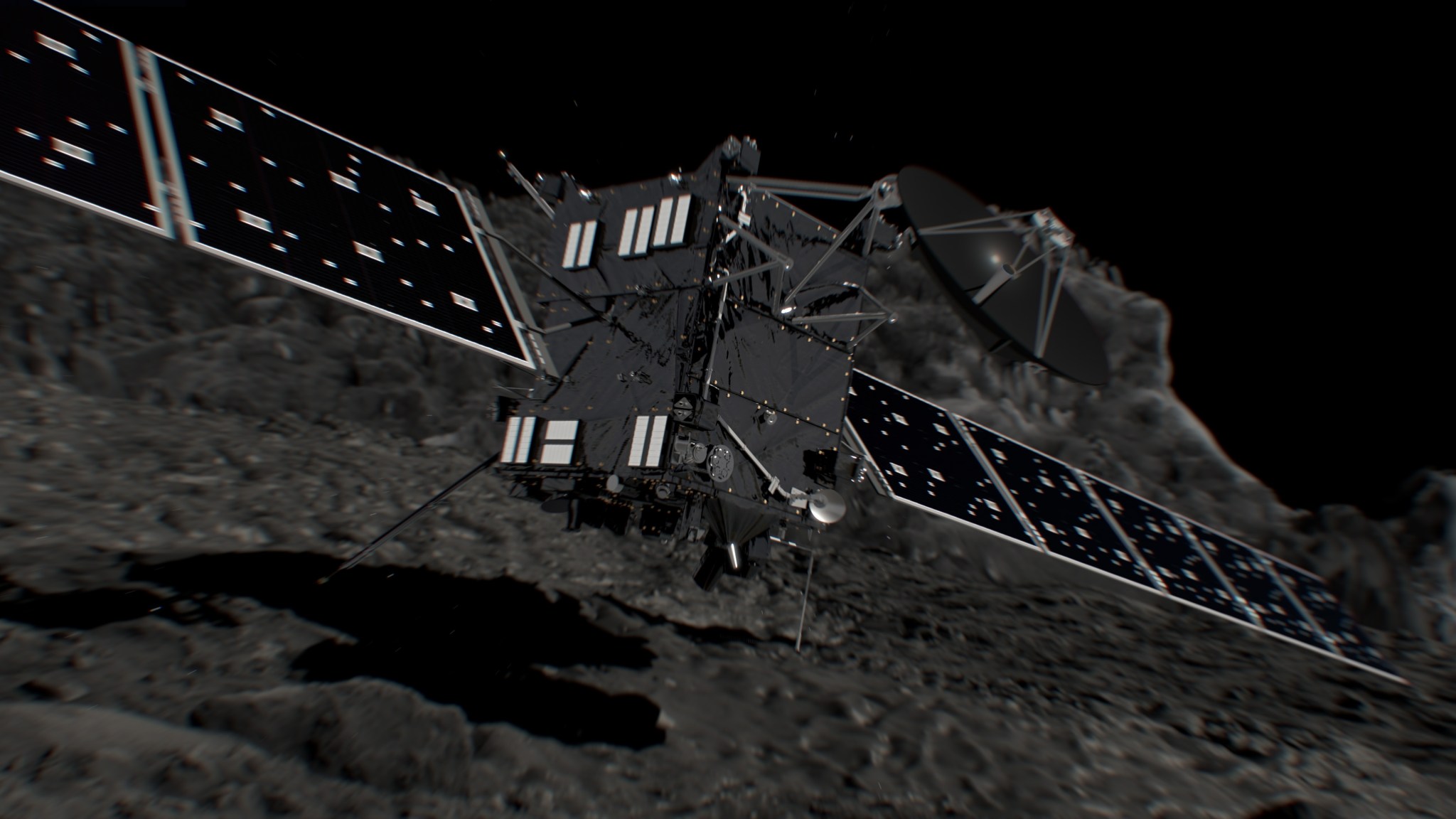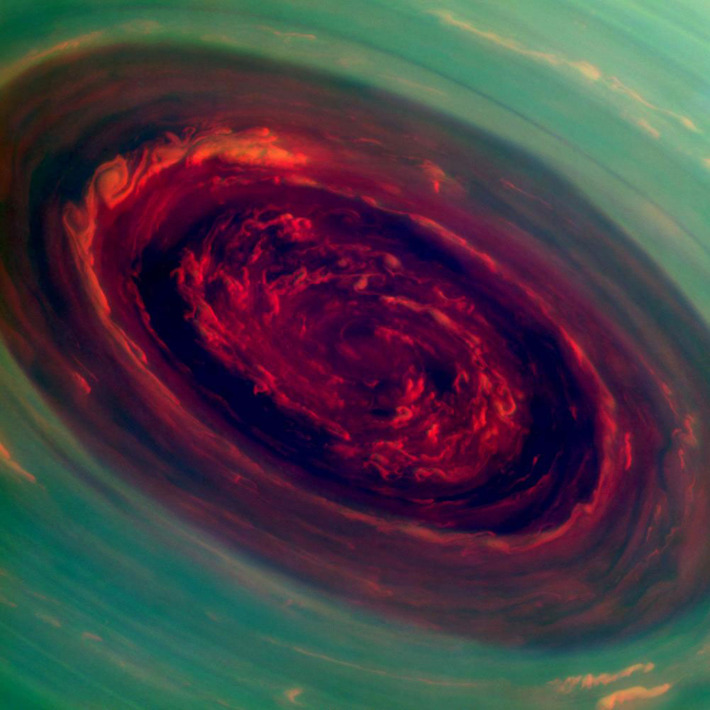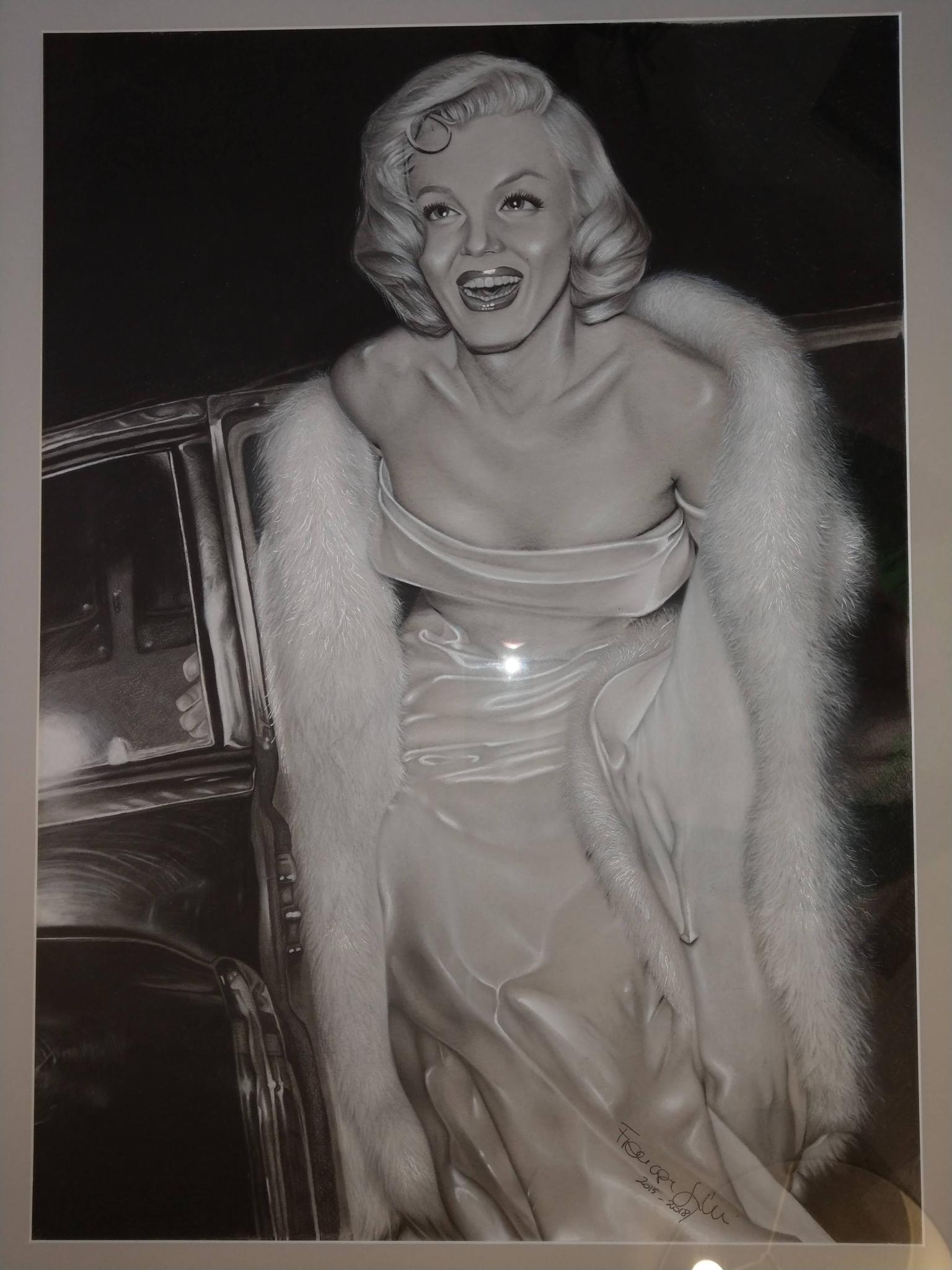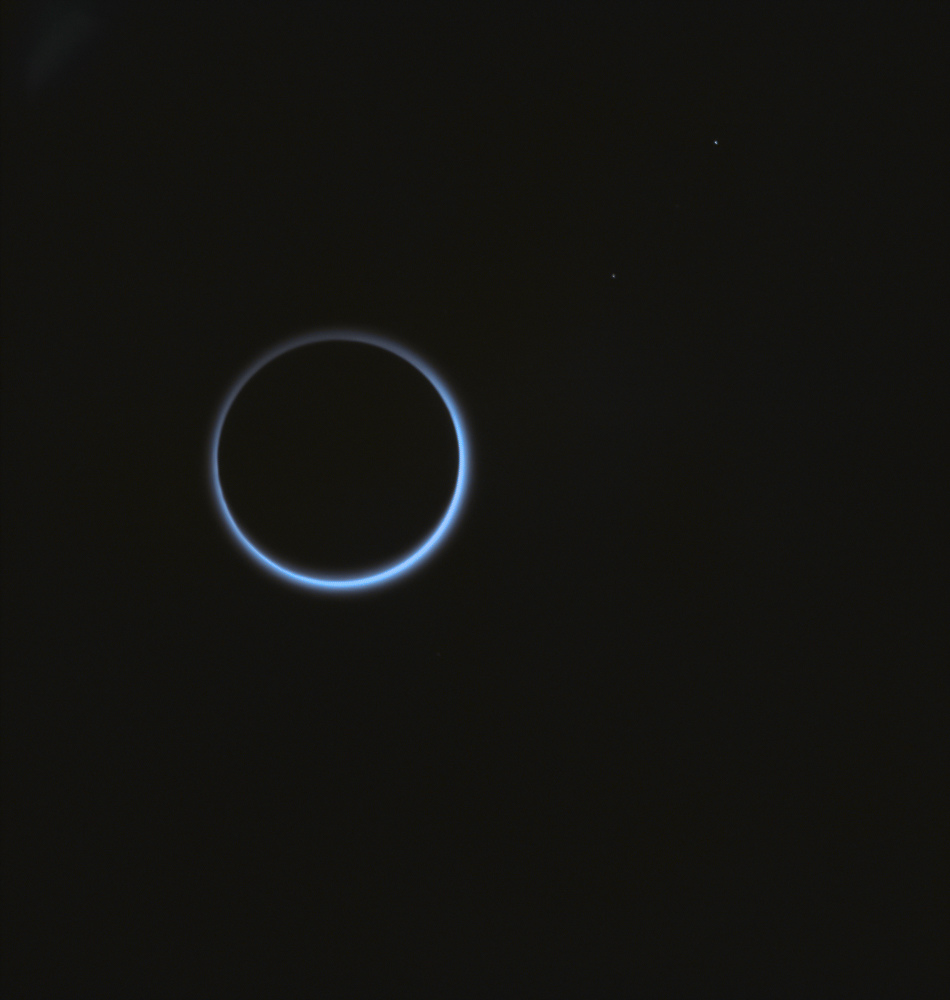Where are you from?
I’m from Rome, Italy.
What got you into Space Sciences? How did you get interested in astronomy?
I think I was born with my interest in space science. My mom told me that I started asking questions about the Moon, the Sun, about why we have day and night, since I was a little girl. I guess I always have had my eyes pointed towards the sky, I was fascinated by it.
When in elementary school I studied the Solar System for the first time it was like love at first sight. I was obsessed with the planets, I wanted to know more and more, and I used to spend hours reading books and the encyclopedia. Since then, I knew studying space and the Solar System would be my job. When it was time to choose what to study at college the answer was pretty clear.
I don’t know where this passion came from, maybe from my dad’s interest in space science documentaries or space-related movies like Star Wars.
What is your educational background?
I studied astrophysics in college. The university system in Italy is a little different from the U.S. because we don’t have a major or minor. If you want to study astrophysics, you study astrophysics, you don’t have other unrelated classes or courses. During the first 3 years, which correspond to a bachelor, I studied physics and mathematics oriented to astrophysics. In the last two years, I focused on astrophysics in all its aspects, from cosmology to atmosphere, stellar physics, galaxies.
After college, I started my Ph.D. in Rome at the Italian National Institute for Astrophysics (Istituto Nazionale di Astrofisica) and I had the good luck to work with one of the most important planetary scientists in Italy, Angioletta Coradini. She has been a great example for me. She was not just a great scientist, but a great boss, a real one. She was able to involve the Institute of Rome in almost all the planetary missions in Europe and NASA, like Cassini, DAWN, and ROSETTA. Unfortunately, she passed away during the second year of my Ph.D.
The group in Rome is focused, among all things, in spectroscopy, so when I started my Ph.D. I started working with spectroscopic data from Cassini. The INAF is specialized mostly in spectrometer and radar, so it was natural for me to start working with spectral data. During my Ph.D. research, I focused on two satellites of Saturn, Dione and Rhea. I was investigating their surface composition and the kind of terrains they have.
What did you do after college?
After graduation, I spent another year as a postdoc in Rome, in the same institute, during which I publish two papers from my Ph.D. thesis. At the same time, I applied for a position in Houston, at LPI, the Lunar and Planetary Institute, to work with Dr. Paul Schenk.
I got the position in 2014, and I moved to the U.S. I lived in Houston and worked with Paul for two and a half years. This experience opened a lot of new doors for me. Being the postdoc of Paul Schenk has been a great experience. He is a great person, not only nice and kind but also a fantastic geologist. He left me pretty free to do my own research with Cassini spectral data. He always trusted me and was pretty happy with my work.
During this period, I developed a technique for mosaicking data from Cassini and I started to create maps and mosaics of Cassini observations of Saturn’s icy moons. I cleaned up hundreds of Cassini data by removing artifacts and noise, and I created high-quality maps of all the regular icy satellites of Saturn. It also turned out that other people appreciated this product so I started to spread these maps around.
After that, I was contacted by Dr. Dale Cruikshank about working with the New Horizons data. The New Horizons compositional group was looking for a spectroscopist to help analyze the spectroscopic data collected by the instrument Ralph.
How did he contact you?
It was networking. I started to collaborate several years ago with Dr. Cristina Dalle Ore. She is a SETI Institute research scientist and had worked with Dale for several years. When she knew that the New Horizons compositional group was looking for a spectroscopist with my skills, she suggested that Dale contact me. As far as I knew, Dale saw my talk about mapping Saturn satellites at a DPS meeting and after that he contacted me. I was awarded an NPP position here at Ames to work with the New Horizons data. In the beginning, I helped out with calibration of the data, which for New Horizons is a more complicated process than for Cassini.
I worked on this task more or less during the first year of my NPP in 2016. In the second year, I started working on a New Horizons scientific project. Specifically, I’m investigating the composition of several terrains on Pluto’s Sputnik Planitia by using New Horizons Ralph data. I calculated and modeled the average spectra of the Sputnik Planitia’s geological units identified by Oliver White in his paper.
Recently, on January 1st, New Horizon’s had a close flyby with the farthest object ever explored, the KBO MU69, unofficially named Ultima Thule. During the flyby, I was part of the team that analyzed the very first data returns by the spacecraft. It’s been a very exciting experience, we all worked to have the very first results from New Horizons observations.
How do you help support Ames’ missions? Why is your project relevant?
This is a key question. It’s not easy to make people understand that.
Nasa’s scientific research and technology development brought back new scientific discoveries, patents, and spinoff technologies that, in many cases, have filtered down into our everyday lives. To make just a short list of NASA’s scientific and technological research products, or products developed with a significant NASA contribution, that have improved our lives (source): memory foam, developed in 1966 to protect astronauts, the dustbuster developed for the Apollo missions, “space blankets” that are used in First Aid kits and camping equipment, cochlear implants, infrared ear thermometers to check someone’s temperature from a distance, invisible braces, CMOS Active Pixel Sensors used in the cameras of our smartphones, scratch resistant lenses developed here at AMES, embedded web technology which paved the way for IoT. Furthermore, the research we do would answer some important questions about where are we coming from, how did everything start. Studying objects like Ultima Thule is crucial to understand how our own Solar System formed because they are very pristine, and their composition resembles those of the primordial nebula.
What’s a typical day like for you?
I arrive in my office in the morning and I mostly work on my laptop, either I do some kind of analysis of the images and spectra, or write papers, write proposals, keep up to date with new publications from other people. This is the kind of day spent here.
What do you enjoy most and least about your job?
Least: writing, because if I’m very much into an argument, it’s hard for me to explain to other people what I do. Writing is not really my skill.
The most exciting thing is the fact that spectral analysis is very challenging, sometimes I feel like I’m solving a puzzle, a very hard one. When you analyze spectra you know more or less the basic material that you have, like water ice for Saturn satellites, methane for Pluto, or nitrogen for Pluto, but all the rest is hidden, it’s completely hidden, and sometimes you have no clue what you are looking for. Some questions from Cassini are 20-30 years old, and we still haven’t answered them. Like what is the exact composition of the moon’s surface, this is not solved. Is it more important the grey side or it is more important the exact composition? We have an idea, but we still don’t know, so it’s really puzzling, it’s like really investigating something. You do your models and try to modify some ammonia or modify some ion, and you see the results, sometimes they are really surprising.
You are obviously in love with your job.
Yes, I am. (laughs)
If you could have a dream job, what would it be?
It would be in design. Completely different. Like house design, everyday tool design, furniture design, something art related.
It makes sense since you are from Italy.
Yes, you are right, we are pretty famous for that.
What’s the most unexpected result that has come from your research so far? Or perhaps share a favorite memory from your career?
Certainly, when I was selected by NASA for an NPP, it was a very big moment for me. And also, when Alan Stern told me I was invited for the Ultima Thule flyby it was a very high moment in my career. My favorite memory is from the New Horizons flyby in January.
What advice would you offer someone who wants a career like yours?
To study a lot, to be passionate about what you do, to be curious. Try to network with as many people as you can because collaboration is very important for your career. Try to choose good groups to work with.
Anything that you would like to share about your family?
I am married, but we don’t have kids yet. My family lives in Italy, it was tough for me to move to another country completely alone, and it was tough for them as well. They always supported me and they understood why I made this choice. I had new experiences, I have new friends, I met my husband here.
What do you do for fun?
I love drawing and painting. This is another passion that I’ve had since I was a little kid. I like to travel and explore National Parks. In September I was on a road trip with my husband, in 20 days we explored something like 15 National Parks, almost one per day. It was a great trip, walking and hiking, and then driving again, it was pretty nice.
What accomplishment are you most proud of that’s not science related?
It is art related, I really like drawing realistic portraits. I improved myself and my technique in several years of practice, improving the technique. I recently started to try some new techniques like soft pastels.
Who or what do you find inspiring?
My Ph.D. advisor, Angioletta, who passed away.
There are other two people who inspired me, they are both Italians.
The first one is a journalist, Piero Angela. He conducts weekly scientific documentaries for a TV show on the national channel. The show has been going on for 30 years! I used to watch it as a little kid, something that I could not miss. Even now when I go back to Italy to visit family, if Piero Angela is on TV, I have to watch it. In each episode several short documentaries are shown, covering science, art and music, architecture, anthropology, and so forth. He is able to catch your attention and communicate to you his passion for knowledge by treating each topic in a simple but complete way. Also, his son, Alberto Angela, makes documentaries, mostly focused on paleontology and archeology.
The second person is Margherita Hack. She used to be the most famous astrophysicist in Italy but is also a scientific disseminator. She has published many books, both popular science targeted at explaining astrophysics to people in a simple way, and at the university level. She used to talk about astronomy on TV and started a journal for sharing astrophysics and news. She is not well known here but in Italy, she is very famous, a kind of a Carl Sagan of Italy.
What’s your favorite space image?
Pluto’s haze
Favorite Quote, by Neil deGrasse Tyson: “The Universe is under no obligation to make sense to you.”





























